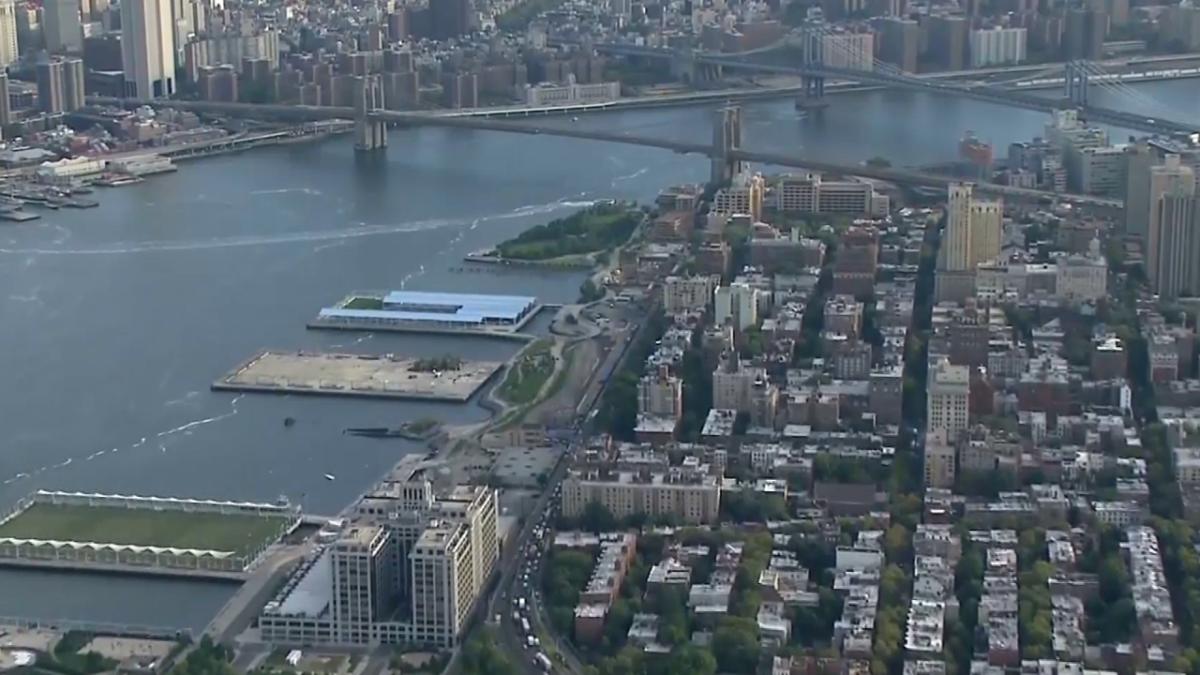New York City Faces Sinking Threat as Buildings Weigh it Down
New York City, known for its towering skyscrapers and bustling streets, is facing a new and alarming threat. According to a recent study conducted by the United States Geological Survey, the city is slowly sinking under the weight of its one million buildings. This phenomenon is not unique to New York City alone, as other coastal towns are also under similar threats.
The study, conducted in May, revealed that the sheer mass of the buildings is causing the city to sink gradually. This subsidence, combined with the rising sea levels, poses a significant risk to the city’s infrastructure and its millions of residents.
However, experts are urging the public not to panic. Instead, they are calling for immediate planning and action to counter the threat. With the effects of climate change becoming increasingly apparent, it is crucial to address the issue of subsidence and sea level rise promptly.
The sinking of New York City is a complex problem that requires a multi-faceted approach. One proposed solution is to implement stricter building regulations and guidelines to ensure that new constructions do not exacerbate the sinking issue. Additionally, experts suggest investing in advanced technologies and engineering techniques to mitigate the effects of subsidence.
Furthermore, experts emphasize the importance of long-term planning and adaptation strategies. This includes developing resilient infrastructure that can withstand the impacts of sinking and rising sea levels. It also involves creating comprehensive evacuation plans and improving coastal defenses to protect vulnerable areas.
The sinking threat not only poses risks to the city’s physical infrastructure but also to its economy and residents’ well-being. New York City is a global financial hub and home to millions of people. Any disruption caused by sinking and sea level rise could have far-reaching consequences.
Local authorities, along with state and federal agencies, must work together to address this pressing issue. Collaboration between government bodies, scientists, engineers, and urban planners is crucial to develop effective strategies and allocate resources to combat the sinking threat.
While the situation may seem daunting, experts believe that with proactive planning and immediate action, the sinking of New York City can be mitigated. By prioritizing the implementation of sustainable and resilient measures, the city can adapt to the challenges posed by subsidence and rising sea levels.
As the world grapples with the consequences of climate change, the sinking of New York City serves as a stark reminder of the urgent need to address these issues. It is a call to action for governments, communities, and individuals to come together and work towards a sustainable and resilient future.
What are some of the reasons why New York City is experiencing land subsidence?
W York City is primarily due to a phenomenon known as land subsidence, which occurs when the ground gradually sinks lower. This can happen for a variety of reasons, including the extraction of groundwater, the deposition of sediment, and the compaction of soil. In the case of New York City, the weight of its buildings is exacerbating the problem.
The city’s buildings are constructed on a combination of bedrock and loose soil. Over time, the weight of these structures causes the underlying soil to compress and settle, leading to a lowering of the land’s elevation. This sinking is occurring at a rate of about one to two millimeters per year, according to the study. While this may not seem significant, over time it can have serious consequences.
Coupled with the rising sea levels caused by climate change, the sinking of New York City poses a significant risk to its infrastructure. Low-lying areas, such as Manhattan’s Financial District, are particularly vulnerable to flooding and storm surges. The risk is further heightened by the fact that many of the city’s major infrastructure systems, such as the subway system and underground utilities, are located underground, in close proximity to the water table.
To mitigate the sinking threat, experts are calling for immediate action. This includes measures such as reducing groundwater extraction, improving land-use policies, and implementing sustainable construction practices. Additionally, the study recommends the use of advanced monitoring technologies to track changes in land elevation and take appropriate measures in a timely manner.
While the sinking threat is not unique to New York City, the study serves as a reminder that coastal cities around the world are facing similar challenges. As the effects of climate change continue to be felt, it is crucial for cities to develop comprehensive strategies to adapt and protect their infrastructure and populations.
In conclusion, New York City’s sinking threat due to the weight of its buildings requires urgent attention and action. By addressing this issue promptly and implementing appropriate measures, the city can better prepare for the future and safeguard its residents and infrastructure from the risks posed by subsidence and rising sea levels.

This article sheds light on the pressing issue of sinking and sea level rise that cities like New York face. It underlines the urgent need for proper planning and immediate action to protect these vulnerable coastal towns from the dual threat. Time is of the essence, and comprehensive strategies should be implemented swiftly to address this impending crisis.
This article highlights the criticality of immediate planning for coastal towns like New York City, as they grapple with the escalating risks of sinking and sea level rise. It serves as a wake-up call, emphasizing the urgent need for comprehensive strategies to safeguard these vulnerable areas and ensure a sustainable future for generations to come.